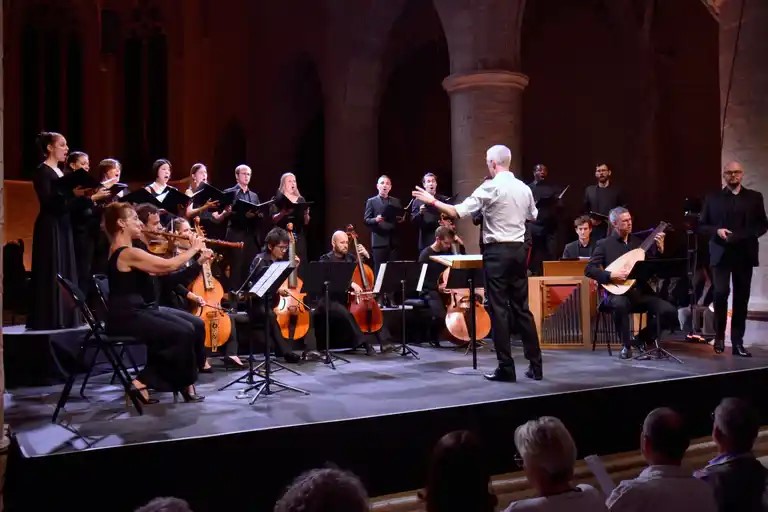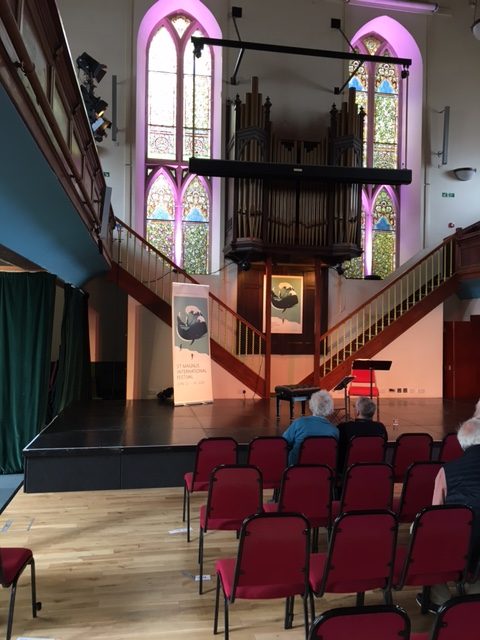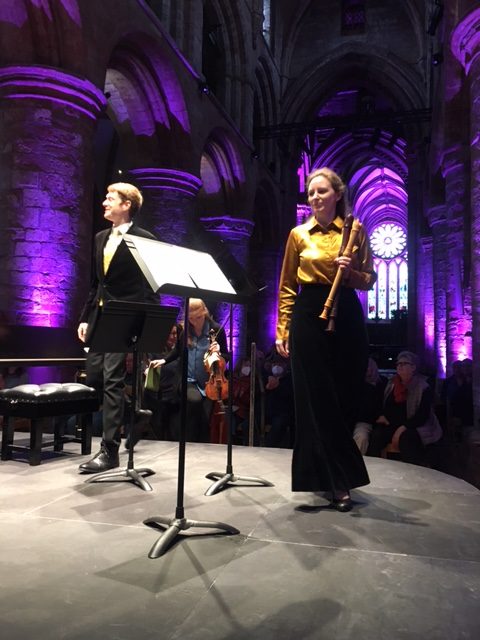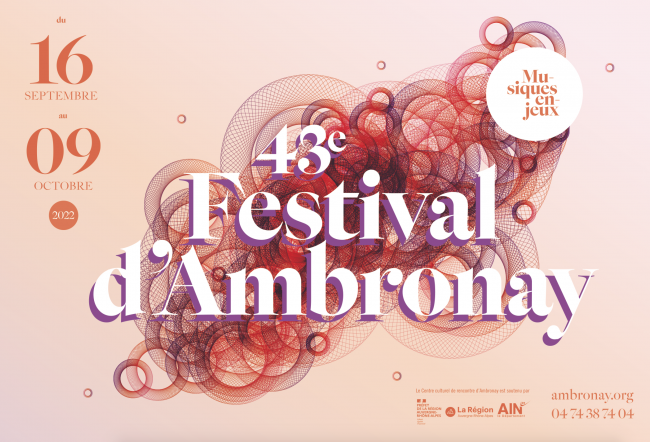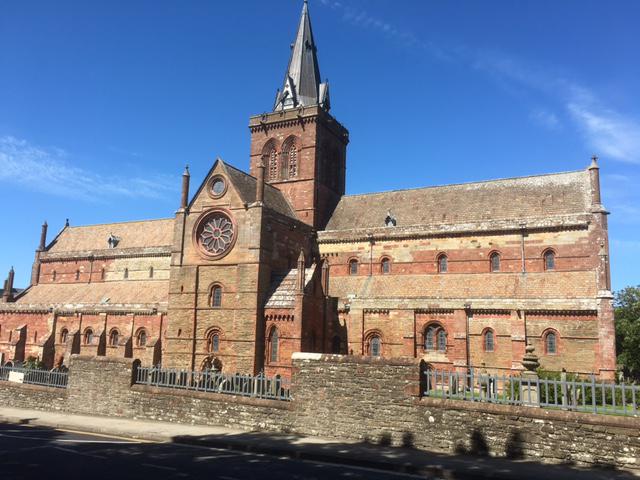Over the years, the special event that is the Ambronay Festival has formed an important part of my musical life, something I attempted to articulate in a special article for EMR on the occasion of the 40th edition of the festival in 2019.
Since then, for a variety of reasons, my visits to Ambronay came to a halt until this year. During that time, some things have inevitably changed, not least that what was a five-weekend event in September and early October has shrunk to three weekends. Perhaps that may be an indication that even in France, where regional arts funding has traditionally been far more generous than it is in the UK, the belt has predictably tightened. More importantly, the ambiance and aims have not changed, there being still a friendly local feel to the event, with the village of Ambronay fully involved in the festival and its complementary events. Perhaps most importantly of all, the festival, the hub of which remains the 11th-century Benedictine abbey, continues to provide a range of music making, much of it involving international artists, that includes an extensive range of repertoire. My choice this year fell on the second weekend (19 to 21 September), during which it was possible to hear a programme that included early Bach cantatas, a concert performance of Handel’s Acis and Galatea (for which you’ll have to go to Opera magazine to see the review), a programme featuring Palestrina and Victoria, a concert for the unusual combination of harp and lute, and a concluding programme of 17th-century operatic and vocal music that turned out to be more an ‘event’ than a concert.
The Bach concert on the evening of the 19th, as with all events unless otherwise mentioned, took place in the splendid acoustic of the Abbatiale (abbey church). It consisted of three well-known early cantatas, BWV 131, ‘Aus der Tiefe’ (1707-8), one of Bach’s earliest surviving cantatas, BWV 106, ‘Gottes Zeit ist die allerbeste Zeit’ (Actus tragicus, ?1707) and BWV 4, ‘Christ lag in Todesbanden’ (date unknown), the last-named variations on a hymn of Luther’s and one of Bach’s rare extant Easter works. All three conform to 17th-century tradition rather than the modern alternation of recitative and aria, with a freedom of form and chorales at times tellingly superimposed on arias. Those familiar with my views will be aware that on the great Bach controversy of our day they are firmly sited in the one-voice-per-part camp, which is what I expected from Sébastien Daucé and his outstanding Ensemble Correspondances. Not so. Daucé employed a small choir of three per part (four in the case of sopranos), including soloists, though far from inflexibly, with, for example, OVPP for the chorale interjections of BWV 131 in the exquisite tenor aria, ‘Meine seele’, shaped with tender affection by Florian Sievers. All the performances here were in fact notable for their combination of an inwardly expressive and contemplative feel and moments of vitality, the final chorale of BWV 4 completing the concert in playful spirit. Well, not quite completing since Daucé gave us an encore in the shape of a final chorus from BWV 150, ‘Nach dir, Herr’, another early cantata, possibly from the Weimar years. That did bring to an end an immensely satisfying evening that others will also soon be able to enjoy, the programme being shortly due for release on CD.
The programme the following afternoon was given by the Spanish vocal ensemble Cantoría, winners of the eeEmerging audience prize at Ambronay in 2018. Since then, Cantoría has grown exponentially both in reputation and numbers, for this year’s appearance fielding an ensemble of thirteen singers in a well-devised programme that embedded Paletrina’s Missa Papae Marcelli with motets by Victoria. I write well-devised since it threw into sharp relief the raison-d’être of the Palestrina, famously composed by the great polyphonist seemingly to answer complaints that the text of the liturgy was being obscured by contrapuntal complexity. Here Victoria’s eight-voice ‘Ave regina caelorum’ soon produced a note in my programme to the effect that while the balance between the voices was good there was little evidence of textural clarity or projection, a situation that changed with the Kyrie and – to an even greater degree – with the Gloria of the Palestrina, the latter’s largely homophonic textures allowing such moments as ‘Qui tollis’ to make their proper effect. The succeeding eight-voice ‘Alma redemptoris’ brought a return to polyphonic splendour, climaxing in a perfectly chorded peroration. Linked by brief organ passages or plainchant, the programme thus proceeded in an unbroken sequence to form a satisfying non-liturgical concert. Although ending with Victoria’s eight-part Ave Maria, it really culminated in a radiantly lovely Agnus Dei, notable for its central section being scored in seven parts rather than the six parts of the remainder of the Mass.
There were three concerts during the course of Sunday. I missed that in the morning, leaving it to the rather younger audience at whom it was aimed, but in the afternoon attended that by Les Accords Nouveaux entitled “L’Art de cour et de Salon – Autriche.” Given in the more intimate Salle Monteverdi by harpist Pernelle Marzorati and lutenist Thomas Vincent, it consisted of a selection of largely inconsequential Rococo salon pieces by composers such as Joseph Haydn, Adam Falckenhagen (1697-1754) and J-B Krumpholz (1742-1790). Despite falling innocuously on the ear, being presented with great charm and receiving some outstanding playing – Marzorati in particular is an excellent musician whose playing gave the music an undeserved point and poise – this really is not concert repertoire to present to an audience sitting silently in serried ranks.
If that afternoon recital may have moments that induced thoughts of the foregone afternoon nap, there was never a chance of that in the final concert. Entitled “Le Donne di Cavalli”, it was given by the soprano Mariana Flores with support from Cappella Mediterranea under their director Leonardo García-Alarcón, also the director of the previous night’s Acis and Galatea. Although the texts of the programme were printed, the sequence as performed had little relationship to it. Not, I suspect, that made much difference to this whirlwind of a concert, which, given Alarcón’s propensity for inflating instrumental support, was in that sense only decidedly on the modest, continuo-biased side. Dressed in a tight glittering dress more redolent of a night on a Hollywood red carpet, Flores’s performances of extracts from operas by Cavalli, and songs by Antonia Bemba (1640-1720) and Barbara Strozzi (1619-1677) seethed with passionate emotion and dramatic intensity in a way that seemed to have its own integrity. There is indeed much pure beauty in the voice, as was demonstrated perhaps above all in Strozzi’s ‘Lagrime mie’, a miniature drama in its own right strategically placed at the heart of the programme. Here, extraordinarily powerful vocal outpourings vied with passages of exquisitely drawn mezza voce singing of great delicacy, words, clearly articulated, tumbled out unstoppably or were lovingly caressed. This remarkable, at times arguably a little ‘over the top’, concert was thus indeed better seen as an ‘event’. Certainly, the Ambronay audience loved it, and it was the kind of thing that I strongly suspect could bring new audiences to the repertoire.
Brian Robins
